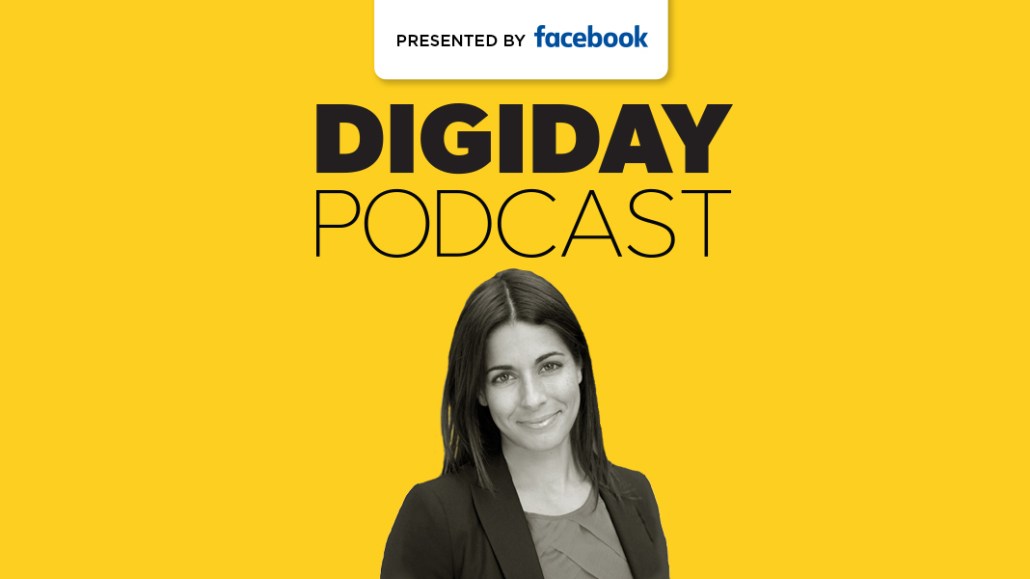The Washington Post’s CRO Joy Robins on working directly with ad agencies

Subscribe: iTunes | Spotify | Google Play | Stitcher | Anchor
The Washington Post’s CRO Joy Robins thinks ad agencies deserve a little more sympathy.
“We need to better understand their business, better understand how they make money,” Robins said on this week’s episode of the Digiday Podcast. “You start to see more and more that the agencies represent their own business model, they are facing their own challenges,” she said. “So how do we stop looking at these ad agencies as essentially the purveyors of the RFP?”
Part of her answer is to borrow what she sees as the successful methods social media platforms have used in working with the same agencies. Since October, some of the Post’s sales teams are directed at “really working with the senior-level executives at holding companies and ad agencies, to understand what are their pain points, what are the things their clients are tasking them with, and how can we ultimately partner to create something that adds value to their businesses?”
On the Digiday Podcast, Robins also spoke about brands’ skittishness when it comes to displaying ads next to news about the impeachment inquiry, the broken model that is the RFP and how often she sits down with Jeff Bezos.
Here are highlights from the conversation, lightly edited for clarity.
RFPs are broken
“As what clients expect has become more sophisticated and complex, the way you’re going to be able to RFP for something like content or data or insights requires an in-person conversation. And often I think what’s most troubling about the RFP is it will ask you for a 24-or 48-hour turnaround time, and also your best, most ambitious ideas at your most aggressive, efficient pricing. So you effectively are adding to the human capital required at any media company. As those scale, as you have 400, 500, 600, 800 RFPs, if your close rate doesn’t actually go up with those RFPs, you’re essentially adding human capital to a game of loss.”
Don’t spend it all on the pre-game
“A lot of publishers spend a lot of time setting up big, great creative teams for the pre-sale process, but really skimped on the project management team, and that’s felt. You have conversations with clients all the time who talk about having PTSD from the execution of a program. And you see it when you can tell that it takes 15 to 18 months between someone announcing a big program and it ending up on the web. It is time-intensive, and if there isn’t a team that is focused on essentially the success of this program, it all feels like a big waste of time in the end.”
Subscription versus ad revenue
“It can’t be an ‘or’ strategy. It has to be ‘and.’ And the reason I think actually having an exceptionally successful subscription business helps us is it does create that loyalty at scale, which is good for brands. Brands want to understand, they want an engaged audience. Having a logged-in audience gives you access to first-party data, which we all know is going to be increasingly important as we hit 2020. It gives us a lot more conversations around ensuring reader experience is best in class because you want to treat your most loyal readers more respectfully. You don’t want to give them terrible ad experiences. And I think the question becomes ‘do you want to give only your subscribers the best experience or your prospective subscribers as well?’ And how do you balance that?”
Brand safety
“Ultimately, all that this brand safety or these keyword block lists are going to do is end up putting advertisers who want to reach a B2B audience or the sophisticated audiences that are news consumers and put them in places that are sports and entertainment, which isn’t necessarily the type of alignment that they’re looking for. So instead of focusing on brand safety, I think the conversation has to turn into this idea of brand suitability. How can we help brands appear in environments that are more closely aligned to their messaging while keeping them away from things that truly are brand safe? There’s a difference between politics and policy coverage, and I think they get to blend together. In politics, they want to stay away from the incendiary, salacious reporting that is driving conversation in a direction they don’t want to associate with. But when it comes to policies, that’s absolutely where they want to be, especially in a world where brands are being pushed to stand for something and consumers really want to understand what they believe in.”
More in Media

With Firefly Image 3, Adobe aims to integrate more AI tools for various apps
New tools let people make images in seconds, create image backgrounds, replacing parts of an image and use reference images to create with AI.

Publishers revamp their newsletter offerings to engage audiences amid threat of AI and declining referral traffic
Publishers like Axios, Eater, the Guardian, theSkimm and Snopes are either growing or revamping their newsletter offerings to engage audiences as a wave of generative AI advancements increases the need for original content and referral traffic declines push publishers to find alternative ways to reach readers.

The Guardian US is starting its pursuit of political ad dollars
The Guardian US is entering the race for political ad dollars.





